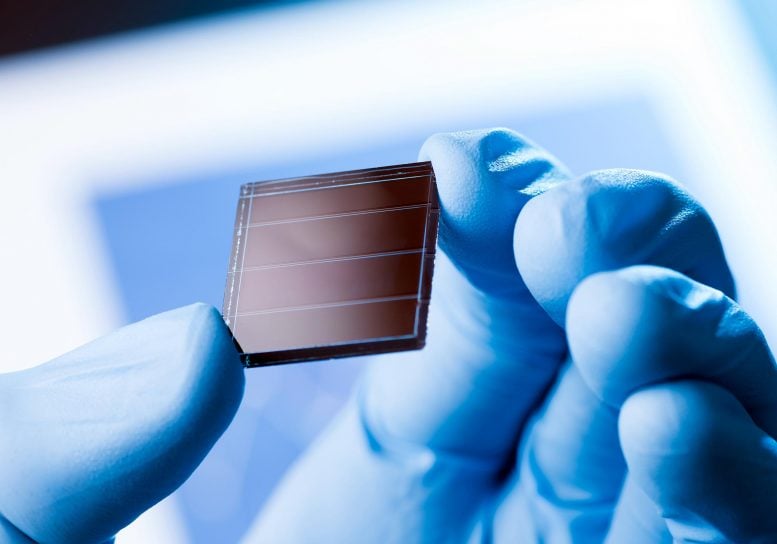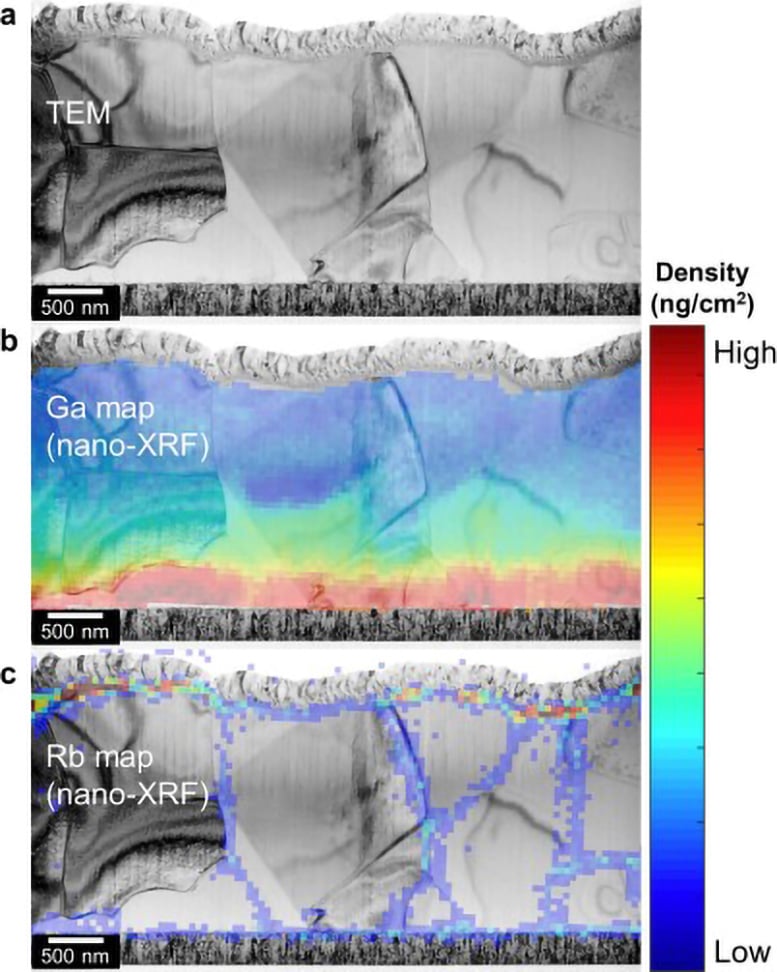
Scientists have set a new efficiency world record for CIGS solar cells at 23.64 percent, highlighting the potential of CIGS technology in advancing solar energy efficiency and reliability. This accomplishment marks a significant step forward in the quest for more efficient and cost-effective solar power solutions.
Uppsala University has set a new world record in the generation of electrical energy from CIGS solar cells, achieving an efficiency rate of 23.64%. This achievement was verified by an independent institute and the findings have been published in the esteemed journal, Nature Energy.
The record results from a collaboration between the company First Solar European Technology Center (formerly known as Evolar) and solar cell researchers at Uppsala University.
“The measurements that we have made ourselves for this solar cell and other solar cells produced recently are within the margin of error for the independent measurement. That measurement will also be used for an internal calibration of our own measurement methods,” says Marika Edoff, Professor of Solar Cell Technology at Uppsala University, who is responsible for the study.

Marika Edoff, Professor and Head of the Division for Solar Cell Technology, Department of Materials Science and Engineering, Uppsala University. Credit: Mikael Wallerstedt
The previous world record was 23.35 percent (Solar Frontier, Japan), preceded by 22.9 percent (ZSW, Germany). Uppsala University has held the record before, the first time being in the 1990s in the research collaboration Euro-CIS.
“At one time we also held the record for a series-connected prototype. Even though it’s quite a long time since we held the cell record, we’ve often been just behind the best results and of course, there are many relevant aspects to consider, such as the potential for scaling up to a large-scale process, where we have always been at the forefront,” Edoff says.
The Global Impact of Solar Cells
Solar cells are increasing rapidly worldwide and solar power accounted for just over 6 percent of electricity around the globe in 2022 according to the International Energy Agency (IEA). The best solar modules of crystalline silicon, which is the most widely used material in solar cells, currently convert more than 22 percent of sunlight to electric power and modern solar cells are both low-cost and stable in the long term.
One target in solar cell research is to attain more than 30 percent efficiency with reasonable production costs. The focus is very often on tandem solar cells, as being more efficient, but so far they have been too costly for large-scale use.
The world record of 23.64 percent has been measured by the independent institute Fraunhofer ISE in Germany. The scholarly paper presents a thorough material and electrical analysis of the solar cell as well as a comparison with previous records for the same type of solar cell from other research institutions.

The image shows a cross-section of the active layers in the thin-film solar cell, with a total thickness of no more than 3 micrometers. Using nano-XRF measured at the MAX IV facility in Lund, it is possible to measure the concentration of both matrix elements and trace elements (in this case rubidium) in the solar cell with high accuracy. Credit: Marika Edoff
A solar cell’s most important properties are the ability to absorb light and the ability to transport energy to an electrical load. For this to succeed, the material must be able to absorb an optimal portion of sunlight while avoiding wasting this energy by converting it into heat within the solar cell.
CIGS solar cells consist of a glass sheet made of normal window glass that has been coated with several different layers, each of which has a specific task. The material that absorbs the sunlight consists of copper, indium, gallium, and selenide (hence the acronym CIGS), with additions of silver and sodium. This layer is placed in the actual solar cell, between a back contact of metallic molybdenum and a transparent front contact. To make the solar cell as efficient as possible in separating out electrons, the CIGS layer is treated with rubidium fluoride. The balance between the two alkali metals, sodium and rubidium, and the composition of the CIGS layer are key to the conversion efficiency, i.e. the share of the complete solar spectrum that is converted to electric power in the solar cell.
When measurement institutes conduct their tests, they measure the solar cell efficiency using filtered light that mimics the sun in both intensity and spectrum. During measurement, the solar cell is kept at a controlled temperature and the independent institutes regularly send calibration solar cells to one another. To be registered as a world record, an independent measurement is required, which in this case was carried out by the measurement institute Fraunhofer ISE.
Technological Advancements and Future Prospects
“Our study demonstrates that CIGS thin-film technology is a competitive alternative as a stand-alone solar cell. The technology also has properties that can function in other contexts, such as the bottom cell of a tandem solar cell,” Edoff says.
Several advanced measurement methods have been used to further understand the correlation between the efficiency and the solar cell structure: material from the solar cell has been characterized by nano-XRF (X-ray fluorescence spectroscopy) at the MAX IV facility in Lund, where a careful compositional analysis has been made. Transmission electron microscopy (TEM) at high resolution has been used to study cross sections of the solar cell, both composition as a function of depth and how the crystal grains are built up, as well as the interfaces between the layers. Using photoluminescence, the spectrum of the light emitted by the solar cell after excitation by a laser has been studied as a means to understand how well the solar cell takes care of electrons internally. A solar cell that shines brightly has a lower share of internal heat losses than a solar cell that shines faintly. Finally, electrical measurement methods have been used to analyze the doping of the CIGS material.
“The fact that we now hold the world record means a lot for both Uppsala University and First Solar European Technology Center. For the CIGS technology, which is known for high reliability, a world record also means that it may offer a viable alternative for new applications in e.g. tandem solar cells. This is important for our research colleagues around the world. We hope that the analyses of the material and electric properties will provide a basis for further improvements in performance,” Edoff concludes.
Reference: “High-concentration silver alloying and steep back-contact gallium grading enabling copper indium gallium selenide solar cell with 23.6% efficiency” by Jan Keller, Klara Kiselman, Olivier Donzel-Gargand, Natalia M. Martin, Melike Babucci, Olle Lundberg, Erik Wallin, Lars Stolt and Marika Edoff, 19 February 2024, Nature Energy.
DOI: 10.1038/s41560-024-01472-3
